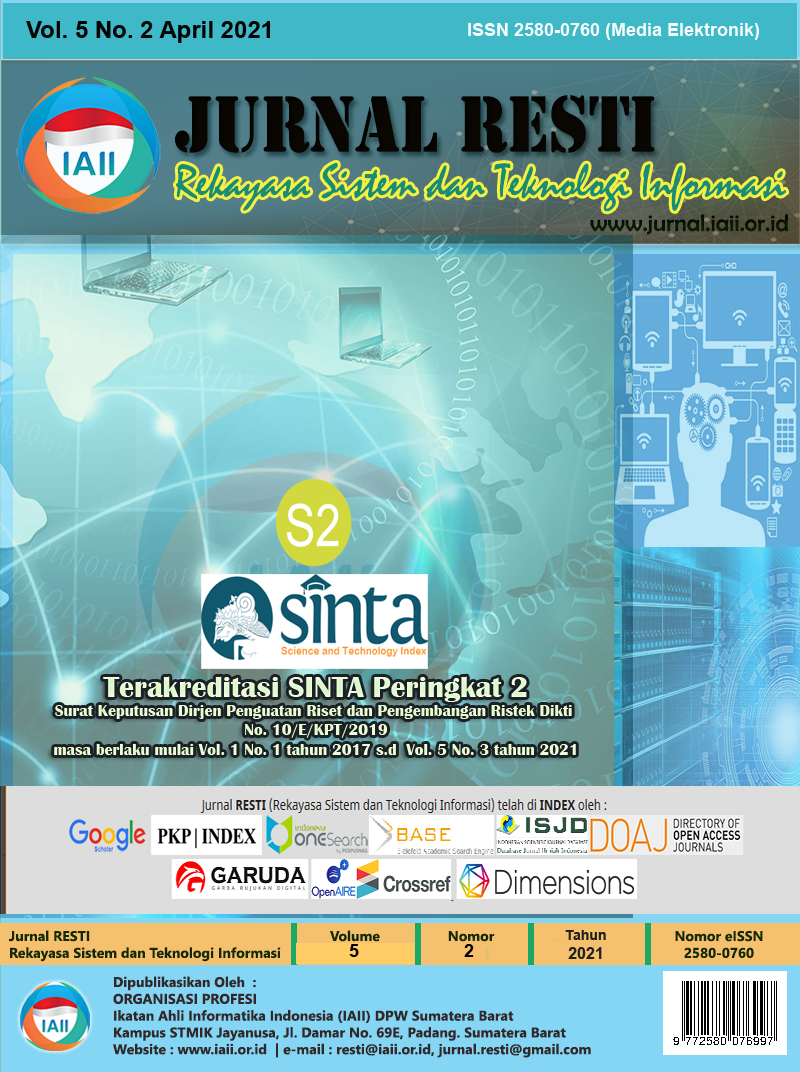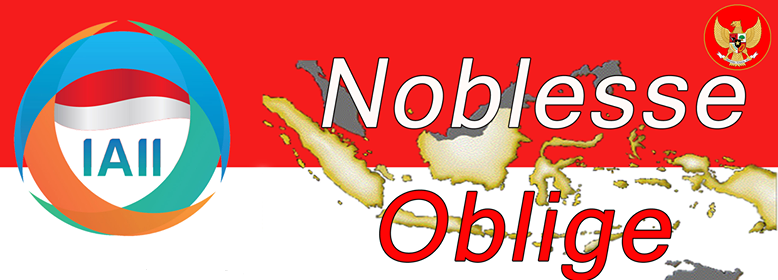Klasifikasi Sentimen pada Twitter Terhadap WHO Terkait Covid-19 Menggunakan SVM, N-Gram, PSO
Abstract
On March 2020 World Health Organization (WHO) has declared Covid-19 as global pandemic. As special agency of United Nation who responsible for international public healthy, WHO has done various actions to reduce this pandemic spreading rate. However, the handling of Covid-19 by WHO is not free from a number of controversies that gave rise to criticism and public opinion on the Twitter platform. In this research, a machine learning based classifier model has been made to determine the opinion or sentiment of the tweet. The dataset used is a set of tweets containing the phrase WHO and Covid-19 in period of March 1st until May 6th 2020 consisting of 4000 tweets with positive sentiments and 4000 tweets with negative sentiments. The proposed classifier model combined Support Vector Machine (SVM), N-Gram and Particle Swarm Optimization (PSO). The classifier model performance is evaluated using the value of Accuracy, Precision, Recall, and Area Under ROC Curve (AUC). Based on experiments conducted, the combination of SVM, N-gram (bigram), and PSO produced a pretty good performance in classifying tweet sentiment with values of Accuracy 0,755, Precision 0,719, Recall 0,837, and AUC 0,844.
Downloads
References
WHO Constitution, BASIC DOCUMENTS, Forty-ninth edition. 2020.
WHO, “WHO | Global tuberculosis report 2019,” 2020. doi: .1037//0033-2909.I26.1.78.
WHO, “World Malaria Report 2019. Geneva.,” World Malar. Rep., 2019.
WHO, “Obesity and overweight: Fact sheet,” WHO Media Cent., 2016.
WHO, “Latest global cancer data: Cancer burden rises to 18.1 million new cases and 9.6 million cancer deaths in 2018,” J. Med. Soc. Toho Univ., 2018.
WHO, “WHO | Cancer,” WHO Factsheet 297. 2014.
WHO, “WHO Strategic Response Plan: West Africa Ebola Outbreak,” World Heal. Organ., 2015.
WHO, “Zika Epidemiology Update,” Who, 2019.
D. Cucinotta and M. Vanelli, “WHO declares COVID-19 a pandemic,” Acta Biomedica, vol. 91, no. 1. pp. 157–160, 2020, doi: 10.23750/abm.v91i1.9397.
C. Sohrabi et al., “World Health Organization declares global emergency: A review of the 2019 novel coronavirus (COVID-19),” International Journal of Surgery. 2020, doi: 10.1016/j.ijsu.2020.02.034.
R. Picheta and J. Yeung, “Trump announced the US will pull out of the WHO. What does that actually mean?,” 2020. https://edition.cnn.com/2020/05/19/us/trump-who-funding-threat-explainer-intl/index.html.
S. Holland and M. Nichols, “Trump cutting U.S. ties with World Health Organization over virus,” 2020. https://www.reuters.com/article/us-health-coronavirus-trump-who/trump-cutting-u-s-ties-with-world-health-organization-over-virus-idUSKBN2352YJ.
N. McCarthy, “Which Countries Are The Biggest Financial Contributors To The World Health Organization? [Infographic],” 2020. https://www.forbes.com/sites/niallmccarthy/2020/04/08/which-countries-are-the-biggest-financial-contributors-to-the-world-health-organization-infographic/#30ad2c97494c.
J. Clement, “Twitter - Statistics & Facts,” 2020. https://www.statista.com/topics/737/twitter/.
R. Krikorian, “‘New Tweets per second record, and how!,’” 2013. https://blog.twitter.com/engineering/en_us/a/2013/new-tweets-per-second-record-and-how.html.
B. Liu, Sentiment analysis: Mining opinions, sentiments, and emotions. 2015.
X. Zhou, X. Tao, J. Yong, and Z. Yang, “Sentiment analysis on tweets for social events,” in Proceedings of the 2013 IEEE 17th International Conference on Computer Supported Cooperative Work in Design, CSCWD 2013, 2013, doi: 10.1109/CSCWD.2013.6581022.
R. K. Bakshi, N. Kaur, R. Kaur, and G. Kaur, “Opinion mining and sentiment analysis,” in Proceedings of the 10th INDIACom; 2016 3rd International Conference on Computing for Sustainable Global Development, INDIACom 2016, 2016, doi: 10.1561/1500000011.
V. A. and S. S. Sonawane, “Sentiment Analysis of Twitter Data: A Survey of Techniques,” Int. J. Comput. Appl., 2016, doi: 10.5120/ijca2016908625.
B. Pratama et al., “Sentiment Analysis of the Indonesian Police Mobile Brigade Corps Based on Twitter Posts Using the SVM and NB Methods,” J. Phys. Conf. Ser., vol. 1201, no. 1, pp. 0–12, 2019, doi: 10.1088/1742-6596/1201/1/012038.
N. Kusuma Wardhani, Siswanto, Y. P. Wibawa, W. Gata, and G. Gata, “Classification Analysis of MotoGP Comments on Media Social Twitter Using Algorithm Support Vector Machine and Naive Bayes,” in Proceedings of ICAITI 2018 - 1st International Conference on Applied Information Technology and Innovation: Toward A New Paradigm for the Design of Assistive Technology in Smart Home Care, 2018, doi: 10.1109/ICAITI.2018.8686751.
Hernawati and W. Gata, “Sentimen Analisis Operasi Tangkap Tangan KPK Menurut Masyarakat Menggunakan Algoritma Support Vector Machine , Naive Bayes Berbasis Particle Swarm Optimizition,” Fakt. Exacta, 2019, doi: 10.30998/faktorexacta.v12i3.4992.
N. K. Wardhani et al., “Sentiment analysis article news coordinator minister of maritime affairs using algorithm naive
Copyright (c) 2021 Jurnal RESTI (Rekayasa Sistem dan Teknologi Informasi)

This work is licensed under a Creative Commons Attribution 4.0 International License.
Copyright in each article belongs to the author
- The author acknowledges that the RESTI Journal (System Engineering and Information Technology) is the first publisher to publish with a license Creative Commons Attribution 4.0 International License.
- Authors can enter writing separately, arrange the non-exclusive distribution of manuscripts that have been published in this journal into other versions (eg sent to the author's institutional repository, publication in a book, etc.), by acknowledging that the manuscript has been published for the first time in the RESTI (Rekayasa Sistem dan Teknologi Informasi) journal ;







